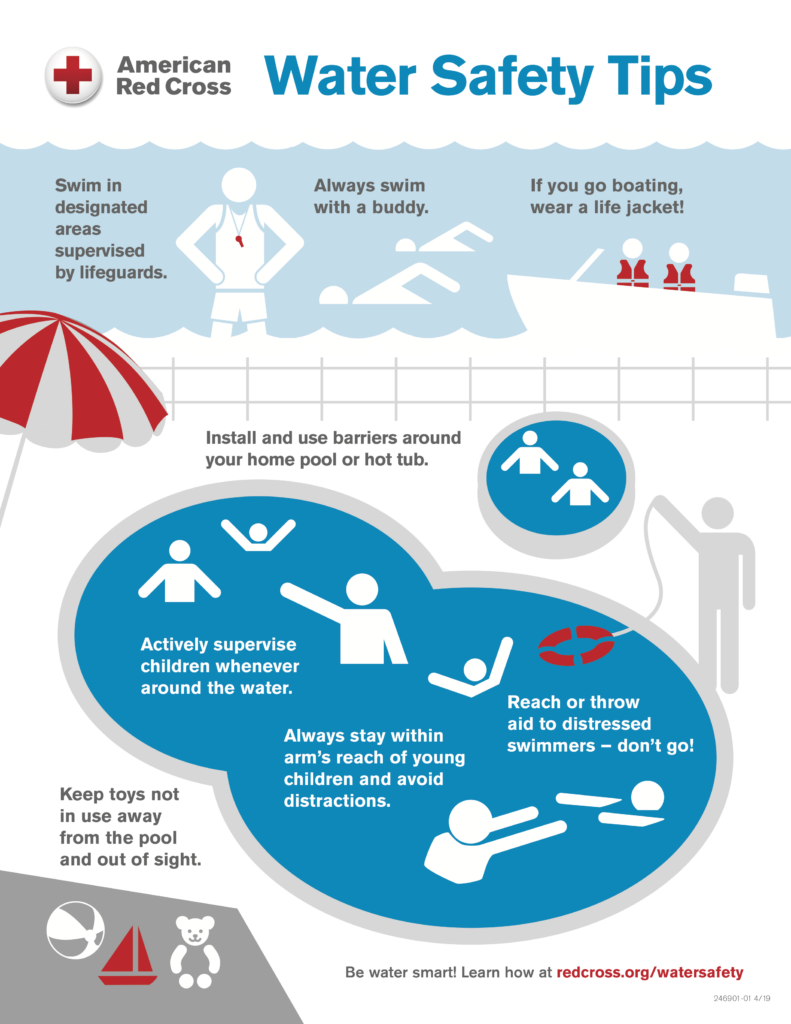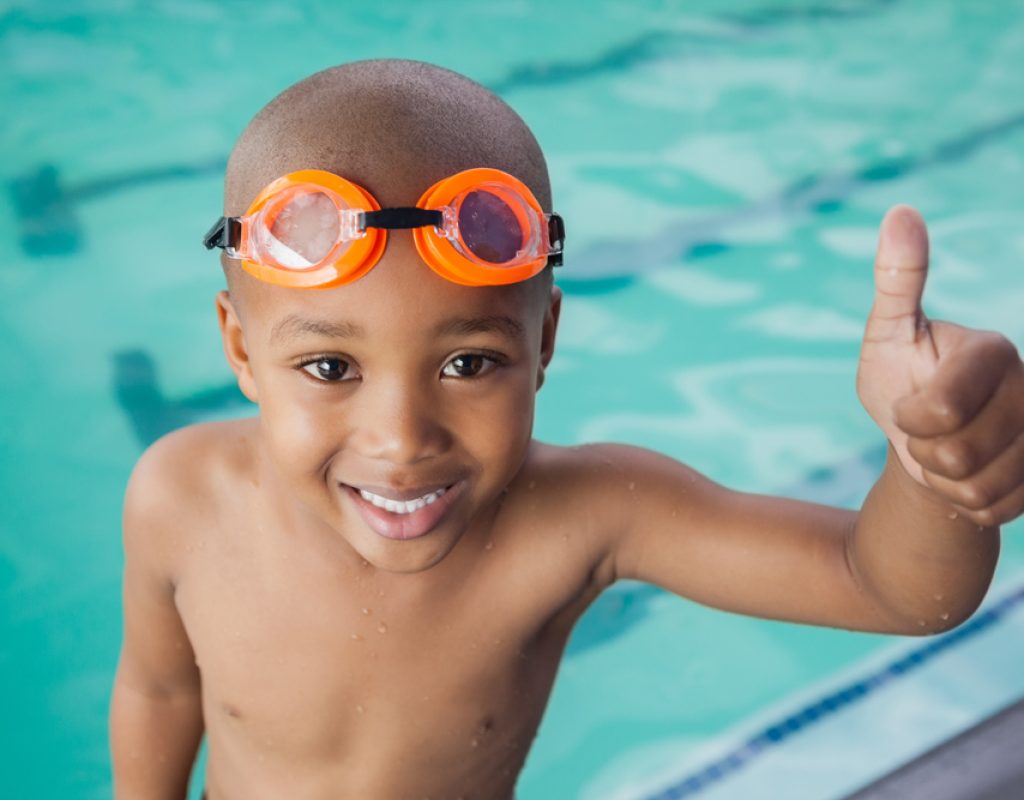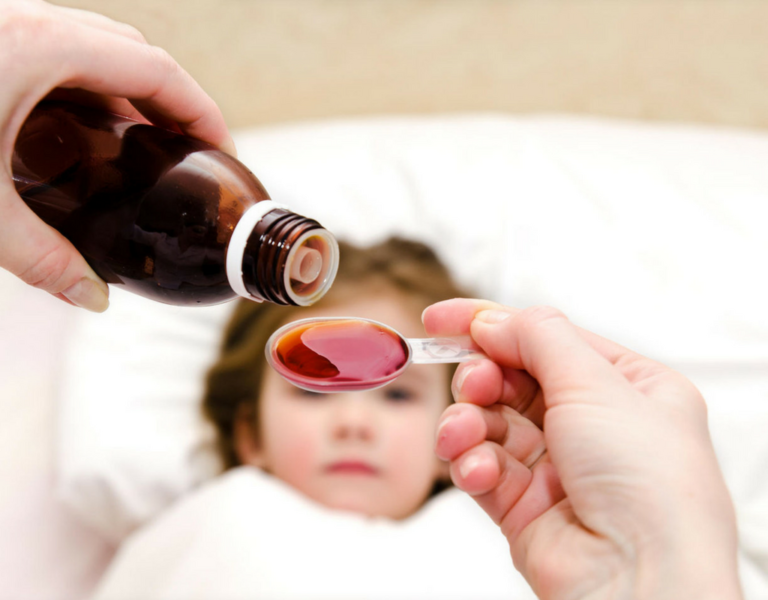One of the best things about warm weather is spending time in the water. Whether you’re at the lake, pool, beach, or water park, being in the water is the perfect way to cool off. But water poses a serious threat, especially to children. According to the Consumer Product Safety Commission (CPSC), drowning remains the number one unintentional cause of death for children in the U.S. ages 1 to 4, and the second leading cause among children ages 5 to 14. 350 children under the age of five drown in pools each year nationwide with the majority of the deaths occurring in the summer months; most in backyard pools. Another 2,600 children are treated in hospital emergency rooms each year for near-drowning incidents. Some of these submersion accidents result in permanent brain damage.
With these frightening statistics in mind, we’ve put together some helpful tips to ensure your family plays it safe while swimming this summer:
General Water Safety
- Never leave a child alone, even for a moment; close supervision by a responsible adult – preferably one who knows how to swim and perform CPR – is the best way to prevent drowning.
- Don’t allow yourself to be distracted, especially if in a social setting. Put your mobile phone down and scan the water, looking for signs of distress, which may not look like flailing arms or a struggle. Click here for a video of what drowning can look like. If in doubt, get in the water to help – don’t wait to ask.
- Don’t rely on “floaties” or other flotation devices. These rarely keep a child safe and often give children and parents a false sense of security.
- Implement a “buddy system.” Make sure older children swim with at least one other person at all times – this is a good idea for adults too!
- Make sure your child knows never to dive into water except when permitted by an adult who knows the depth of the water and who has checked for underwater objects.
Pool/Spa Safety
- Check pool drains and make sure they have proper covers and are functioning properly. If swimming in a hotel, resort, or other pool, check to make sure there are anti-entrapment drains.
- If you are a pool owner, consider adding an alarm, so you’ll be alerted immediately if a child accidentally falls into the water when no adult is by the pool. Another option is a Pool Guard, which is a cover that keeps a child just above the water if they fall over the edge.
- Keep rescue equipment (a life preserver or shepherd’s hook) and a portable phone near the pool. Choose equipment made of fiberglass, foam, or other materials that do not conduct electricity.
- After a day of water fun, empty all buckets, wading pools, and water toys and store them upside down.
Open Water Safety
- Never let your child swim in canals or any fast-moving water.
- Ocean swimming, if at all possible, should only be allowed when a lifeguard is on duty. If there is no lifeguard, be in the water within touching distance of your children.
- Teach children about rip currents. If you are caught in a rip current, swim parallel to shore until you escape the current, and then swim back to shore.
- Seek shelter if a storm is on the horizon; don’t wait to get out of the water. Get off the beach in case of lightning.
- Always wear a life jacket when on a boat.
Perhaps the best way to prevent children from drowning is to teach them to be strong swimmers. The American Red Cross offers swimming and water safety training classes for ages 6 months and up. Click here to locate an American Red Cross trained provider near you.
Download and print this helpful flyer from the American Red Cross and share it with your children.






